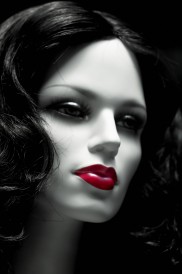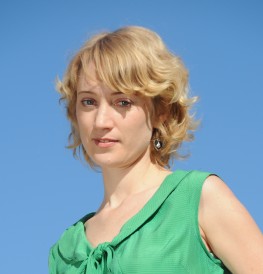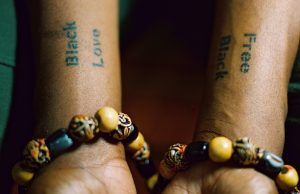Short Story: "Small Change"
By Meg Mundell
The woman’s blink rate tells him she’s nervous: almost once per second, four times the normal count. Jack knows a touch of nerves can help soften up a client, especially in the clinic’s private waiting cubicles, but if he overdoes it she may fear opening her wallet. And that must be avoided at all costs.
Today’s tuning strategy will combine his intuition with her file data: Kate Moore, 36, legal consultant, IQ 128. Single, lives alone, one cat; decent income, eldest child, immigrant-made-good parents who scrimped to afford private schools. Non-smoker, gym-goer; moderate drinker, wheat allergy. Likes the ocean, cinema games, soul music, fresh flowers – especially jonquils. Favourite colour: orange. No illicit drugs, no major social transgressions. Dog phobia. Body issues. Unremarkable sexual history. Referred by her mentor, who’s treating her for Type B depression, mild anxiety and low self-regard. Anxious about ageing, lack of partner, declining fertility, career plateau, etc. Yep, he gets the picture. And visually? A six out of ten. For now.
He has a few minutes before the medico summons her. He pipes a generic instrumental soul ballad into her cubicle, then dials up a subtle scent, a blend of seaspray and jonquils, just below the threshold of consciousness. It takes less than a minute to bring her blink rate down, but hey, thinks Jack, let’s not overdo it. If she gets too tranquil, he can always dial in some dog.
Kate has just begun to relax when a woman’s voice addresses her from the ceiling. “Ms Moore, Dr. Paige is ready for you. Please proceed to consult room 3, on the left.” Kate pads down the thickly carpeted hallway, self-conscious in her white robe and paper slippers. “Senior Medico Elaine Paige,” reads the door plaque, “Rejuvenation specialist. BASc(Hons), MD, MSc, MappPsych.” All those letters, she thinks; they must spell experience.

So she’s not prepared for the fresh-faced woman behind the desk; the medico can’t be older than late 20s, which Kate knows is impossible. Dark glossy hair swept back off a porcelain forehead, immaculate skin and symmetrical features, generous lips and a bright blue gaze. Slim, of course. And pale, fashionably pale. She stands to greet Kate, offers her hand: her smile is assured and perfectly aligned, her hand soft. Kate tries not to stare. The woman’s skin appears completely poreless. Focus, she tells herself. The medico is speaking.
“Primarily we use infralight and dermaceuticals, so there’s minimal downtime,” she’s saying. “You’re an excellent canvas, so we have a decent substructure to work from.” The woman checks her notes. “I’ve reviewed your profile and goals, and tailored a range of options, which can be package-purchased. If you decide to proceed, we can revise you from a Visual Six up to a guaranteed V8.5. That rating’s independently reviewed, of course.”
Kate knows jargon when she hears it, but she also knows the commonsense translation: as her mum used to say, you catch more flies with honey. She’s read the research. Good-looking people earn more, court better opportunities and command higher-quality suitors. That’s why it’s called “attractive” – beauty is a magnet for good fortune. Client e-liaison at her firm is mostly face-based, and first impressions count. The software lets you make minor cosmetic adjustments – evening skintone, softening dark shadows – but it can’t fix genetic flaws or reverse the effects of time. Kate is overdue for promotion. And for other things, too. She won’t admit to loneliness, but knows the euphemisms: unsettled, adrift, disconnected.
The woman glances up and smiles, and it’s like sitting near firelight: Kate is suffused by an amber glow, that watchable face turned full beam onto hers. Before she knows it, she’s removing her robe in front of a 360-degree mirror, as the medico uses a remote control to activate the body scanners and display screens. “You can pay by installment, but it’s really an investment,” she’s saying, “a way to advance your interests in a competitive market. When you weigh it against the payoffs, the doubled or trebled income generation over one’s lifespan, it’s just small change.”
Jack zooms in on Kate standing naked before the mirrors. He cranks the consult-room lights up high, creating a chilly glare that throws every flaw on her body into harsh relief, and lowers the room temperature: not quite cold enough for goosebumps, but too cool for comfort. That’s him for the time being: now it’s the medico’s move. Still, he can’t help thinking that this woman, Kate, looks more than uncomfortable. The word that comes to mind is mortified. He wants to look away, but that’s not an option. He has a job to do.
Kate is huge: on every side, in the surrounding screens, she sees a magnified section of herself, a collage of fleshy surfaces filmed from every angle. It’s all there, blown up under the unforgiving lights: the pale stretchmarks patterning her breasts and hips, purpled scars from childhood falls, the dimpled flesh of her buttocks. And her face: the tired skin with its blotches and gaping pores, a tracery of fine lines around her eyes, broken capillaries blooming like tiny undersea flowers. Thick hairs sprouting from the mole on her cheek, and the marionette lines etched around her mouth, like two sour parentheses. “Oh my god,” she hears herself say, the facial images quivering as she speaks. “What a disaster.”
From behind Kate’s shoulder the medico makes a sympathetic sound. “Nobody looks fantastic blown up this big,” she says, but Kate glimpses the woman’s forearm in one corner of a screen, the skin smooth and pale as pearl. “We just need to identify the trouble spots to help you prioritise, determine what’s most urgent.” Kate resists the urge to suck her stomach in. No point in kidding yourself.
“My first recommendation,” says the medico, “is facial elevation. That will take off ten to fifteen years. We tone the underlying muscles, plump the skin, refine the texture and tighten everything back onto the underlying bone structure. Watch.” She tinkers with her remote, and one screen zooms out to frame Kate’s face. “This is just an approximation,” says the woman, “but it gives you the general idea.”
As Kate watches, the image softens, morphs, and materialises into her younger twin. A little thinner, yes, but unmistakeably Kate in her mid 20s, while Aden was still around and her adult years lay ahead of her like an unwrapped gift. A heaviness falls away and she feels herself stand taller; her on-screen doppelganger shimmers a moment, then her face comes back into focus, fresh and unspoilt and optimistic. This is procedure A, apparently; the medico is detailing the cost, and Kate finds herself nodding.
Now the woman has moved on. “Under career goals you’ve listed promotion – working with blue-chip clients in the European market.” Kate nods. There have been rumours of downsizing, so she must be proactive. “If that’s a serious target, I’d also recommend dermal illumination, full body. It’s very popular since the China relationship soured and our borders tightened. Skinwise you’re a mid-four on the Fitzpatrick scale; we can lighten you to a mid-3, but unfortunately your Asian traces won’t let us go further without risking complications.”
 Kate’s read this research too, and although she doesn’t like it much, the evidence is clear: in her field some ethnic markers can be overlooked, but skin colour has an undeniable influence on earnings. These are suspicious times, and while the war might be geographically remote, everyone’s seen the enemy’s face. Australia’s old alliances have dissolved and there’s big money riding on the new ones. It’s paranoid nonsense, of course, but she’s seen the figures – and the unemployment queues. Even the new finance minister, whose grandmother was apparently Aboriginal, caved in to pressure and became noticeably lighter prior to his new appointment. And look at her brother: stuck working in debt recovery, where your looks don’t matter and your salary reflects that. Why make life harder for yourself? “The good news,” the medico is saying, “is that it’s fully reversible. When the zeitgeist changes, so can you.” This, she notes, is procedure B. The on-screen Kate is now several shades lighter, a colour the medico calls “bisque”. As the woman cites the cost, Kate is already budgeting the cutbacks in her head.
Kate’s read this research too, and although she doesn’t like it much, the evidence is clear: in her field some ethnic markers can be overlooked, but skin colour has an undeniable influence on earnings. These are suspicious times, and while the war might be geographically remote, everyone’s seen the enemy’s face. Australia’s old alliances have dissolved and there’s big money riding on the new ones. It’s paranoid nonsense, of course, but she’s seen the figures – and the unemployment queues. Even the new finance minister, whose grandmother was apparently Aboriginal, caved in to pressure and became noticeably lighter prior to his new appointment. And look at her brother: stuck working in debt recovery, where your looks don’t matter and your salary reflects that. Why make life harder for yourself? “The good news,” the medico is saying, “is that it’s fully reversible. When the zeitgeist changes, so can you.” This, she notes, is procedure B. The on-screen Kate is now several shades lighter, a colour the medico calls “bisque”. As the woman cites the cost, Kate is already budgeting the cutbacks in her head.
The final procedure is no surprise; it’s commonplace these days. Kate has considered eye augmentation before, despite her brother’s oft-expressed contempt for it. That’s all very well for him, she thinks, with a flash of anger – but who does he call when he needs to borrow money? Procedure C does involve some downtime, the medico is explaining, as there’s a minor surgical element. “But is it safe? Will it look natural?” asks Kate, watching her own eyes on the screen – or are they hers? Already they are widening, opening up, a neat eyelid crease appearing above each eye.
The medico’s lovely face joins hers onscreen. She smiles at Kate, a genuine smile, and winks one of her own beautiful, bright, round eyes. “What do you think?” she asks playfully. “Does it look natural to you?” Kate is smiling back now. “You’re kidding me,” she says. The woman laughs, and her face disappears from view. “One-quarter Chinese,” she answers. “I can’t tell you what a difference it’s made for me.”
Jack checks his controls for the final phase. The consult is almost over; the medico has left Kate alone, remote control in hand, to flick through her before-and-after shots. This is the critical point: without the doctor present to guide or influence her, Kate will feel that she’s making an independent choice, a decision that’s all hers. She’s wrapped in her robe, settled in a comfortable chair sipping herbal tea, and he’s raised the room temperature slightly. Beside her lies the contract, flagged at the spots awaiting her signature, and a silver pen.
He watches her carefully, timing his sensual choreography to match her thoughtful navigation of the slide-show, her back-and-forth flicks between the old Kate and the potential new one, the yet-to-be-realised beauty that lies just a click away. Thankfully, she’s slow and considerate as she switches between the images; some clients go too fast, making his task near-impossible.
Scent lingers too long to be useful here. Audio is Jack’s trump card now: subliminal, immediate and quick to fade, it’s perfect for the closing stages. When Kate’s old self fills the screen, an unflattering body shot or facial close-up, he shoots a single pulse of infrasound into the room – a subtle touch, not enough to induce nausea, just a mild twinge of unease. When Kate flicks back to her rejuvenated self, he rewards her with a gentle hum, subaudible and womblike, the softest touch of gold-tinted light, and a millisecond image of a handsome man, caught mid-smile. It doesn’t take long. Jack breathes a sigh of relief as she picks up the pen: this month’s rent is in the bag. __________________________________________________________
Meg Mundell is a New Zealand-born journalist, PhD researcher and author living in Melbourne, Australia. Her books include the new digital collection THINGS I DID FOR MONEY (Scribe, 2013) < http://scribepublications.com.au/books-authors/title/things-i-did-for-money/> from which this excerpt is taken, and the acclaimed novel BLACK GLASS(Scribe, 2011) < http://scribepublications.com.au/books-authors/title/black-glass/>. Meg’s writing has been published widely in major Australian outlets including The Age, The Australian, Best Australian Stories, The Monthly andMeanjin. Website: www.megmundell.com | Twitter: @megmundell





0 comments